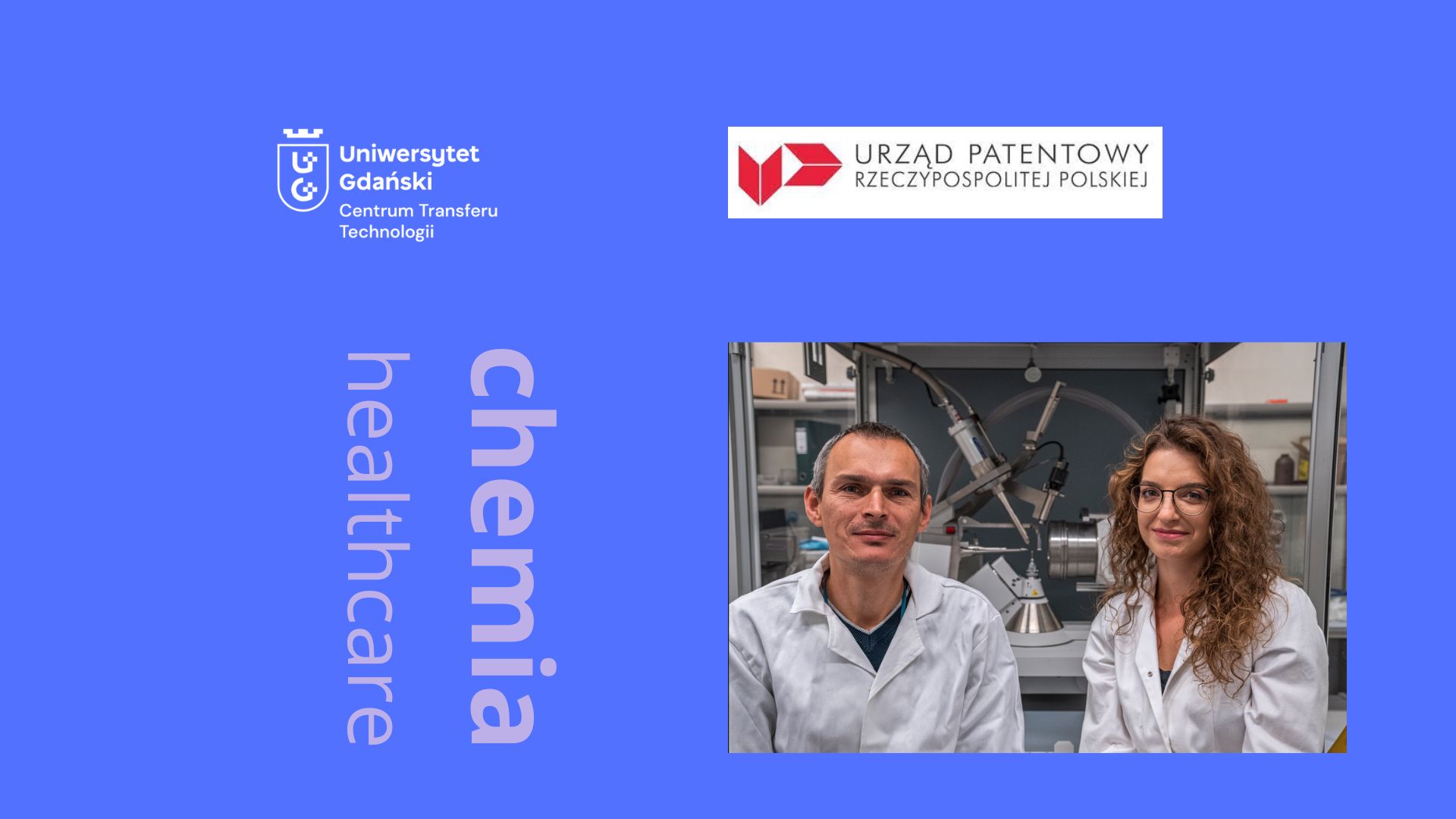The Polish Patent Office has issued a decision to grant a patent for the invention ‘Nimesulidesalts and the method of obtaining nimesulide salt crystals’, developed by Artur Sikorski, PhD, Professor UG, and Małgorzata Rybczyńska, MSc, Eng.
The invention developed by the team of scientists in the laboratories of the UG Chemistry Department received protection, informs Katarzyna Gronowska, director of the UG Technology Transfer Centre, a unit coordinating the process of intellectual property protection and commercialisation of scientific research results.
One of the challenges faced by manufacturers of pharmaceutical substances is the poor solubility of drugs in water. According to estimates, more than 40% of pharmaceutically active compounds are practically insoluble in aqueous solutions.
Using advances in crystal engineering, scientists have succeeded in obtaining multicomponent crystals containing nimesulide.
The new forms of the drug affect:
-improved solubility of the active substance in water,
-different routes of administration than oral administration,
-reducing the dose of the drug taken,
-lengthening the interval between dosing of the drug,
As the innovation is a new form of an existing medicine fewer formalities can be brought to market more easily and quickly due to fewer formalities to be fulfilled.
The patent relates to new solid forms of nimesulide, a non-steroidal anti-inflammatory drug (NSAID), in crystalline form. Nimesulide is one of the anti-inflammatory and analgesic drugs used in dozens of countries around the world, available mainly by prescription. The drug has anti-inflammatory, analgesic and antipyretic properties. When used for certain conditions, it shows a more effective effect than other NSAIDs.
– According to statistics, non-steroidal anti-inflammatory drugs (NSAIDs) account for approximately 10% of all analgesics, anti-inflammatory drugs and antipyretics prescribed by doctors worldwide. We reach for them when we feel pain, catch an infection or when we have a fever. They are available in a variety of forms – tablets, granules, patches, gels, ointments, suppositories and others, says Prof Sikorski.
– Work on the substances, which are the subject of the invention, lasted more than 5 years. The compounds we obtained are characterised by better physicochemical properties (including solubility, stability) in comparison with pure nimesulide, which is an advantage over commercially available pharmaceuticals containing this drug. This creates, among other things, opportunities for different formulations of formulations containing this active substance, dose reductions and extended dosing intervals. It also has an economic dimension – it is possible that the invention could reduce the cost of manufacturing pharmaceutical products containing this medicinal substance.
Due to the widespread use of non-steroidal anti-inflammatory drugs, the invention has great market potential. Work is currently underway to scale up the compound synthesis process to a semi-technical scale and to develop formulations of the preparations. Some of this research has been funded by the Innovation Incubator 4.0 project, coordinated by the UG Technology Transfer Centre. The invention is also the subject of an application to the European Patent Office (EPO).
The invention was among the finalist solutions in the competition ‘EUREKA! DGP – we discover Polish inventions’, edition 2023.
Artur Sikorski, PhD, Professor UG






